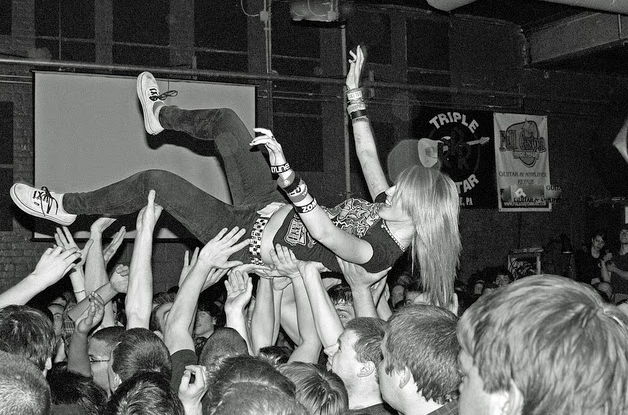1973
My mom went back to work while I was still a toddler. During the day I stayed in Mrs. Eiler’s Family Day Care; she went to the hospital.
Raggedy Ann went everywhere with me. (Photo via Cuddly Collectibles)

One time on the Sabbath our home almost burned down. Friday nights Jewish women light candles, and the candles are supposed to burn themselves out over time. My mom lit the candles and put them too close to the curtains.
I toddled in to tell my sleeping dad that our home was burning down.
I’m pretty sure Raggedy Ann was with me.
1977
I had seven Barbie Dolls as a kid. I remember this, that I counted them, because we didn’t have money to buy “useless things” and each one of them was precious.
Even today I remember their amazing presence. The majestic prom gowns and the twist-ties holding them firmly to the big clear rectangular boxes they were stacked in.
My Barbies wore whatever I told them to wear – even the rags I tore off our old pillowcases and shaped into dresses of my own “design” – and the best thing of all was that they never argued back. (Photo via BarbieCollector.com)

I didn’t know any other kids. We moved around every year. But those Barbies were a constant. And even when I chopped off their hair, one at a time (to see how different styles would look) they didn’t hold it against me.
In fact they didn’t say a word. Just looked at me with that blank, accepting, “that’s cool” Mona-Lisa type smile.
Dolls let me forget real life, and make a fake world which ran only by my imagination and rules.
1981-1987
The local library has a lot of books. I take out a dozen at a time. There aren’t enough books in this world for me. Fiction, nonfiction, drama, romance, politics, business, leadership, management and sales.
I like books and don’t mind the Tandy computer my father’s given me. It has a green strip across the top where you can type letters and see them on a screen.
The electric typewriter starts collecting dust.
Next follows Wordperfect, at work. At home my dad gives me my first Mac. (Photo via Wikipedia) Although it “dies” more often than I want it too – the little icon with the bomb shows “system error” – it seems as though heaven has descended to meet me.
Putting words in a machine creates a perfect world.
1997
There is this thing called e-mail I start using. I stay up late to work on my dissertation, on teaching, on writing and eventually projects for work.
By some miracle, I can send words to another person without paper, and they can reply back almost instantly.
2002
For my company, I start a social network on Yahoo! Groups.
It is mind-boggling that there are people in other countries who not only read the stuff we post, but who are experts on the same subject matter, living halfway around the world.
Conversations among the group happen at all hours of the day.
One time an expert from the group shows up in person. It’s really strange. I had almost begun to believe this person lived in a machine like the Wizard of Oz.
2007
I start my blog.
The idea that I can write whatever I want and not have to ask someone else for permission to publish it is unbelievable.
2009
Twitter.
Facebook.
LinkedIn.
2014
Kids these days do everything online and in groups. I see them in the mall. Taking selfies of themselves eating frozen yogurt. Group-tapping texts out on their iPhones while waiting for their pedicures to dry. Yelling over the stairwells to each other, pants pulled down in the back to show off hyper-patterned boxers, looking up from their devices just long enough to register the moment.
They’re talking on Skype on their iPhones while simultaneously playing group games of Minecraft.
If they’re forced to get off the game for five minutes they will begrudgingly head over to the iPad and read their textbooks, which are also connected to the Web.
They’re my kids, and everything is a group project. They build rockets, write term papers about India, research the civil rights movement, and make presentations on best practices in PR, all in groups.
They argue with each other on Facebook, then decide that Facebook is annoying and not for them. They go on Whisper and Snapchat and I don’t want to know where.
They go to college, and rely on Google Docs the hundreds of collaborators who will painstakingly fix up semester-long notes just before a midterm.
2015
The adults are still playing catch-up. We’re sleeping, compared to these kids. But here’s what we like:
- Our friends post pictures of themselves and their kids on Facebook. We like to see what’s going on in their lives. Maybe we can be better friends than we were in high school even, when we were too busy competing with each other to appreciate the moment.
- We search Twitter hashtags to find out what’s going on with major social issues like #Ferguson. We have a voice.
- Sometimes we observe, or even get into an important conversation about something that matters, on Facebook or LinkedIn or wherever.
- We document our travels and our ordinary lives on Instagram.
- Interesting things are found and assembled on Pinterest.
- “Likes” and shares and retweets, for things that matter to many of us. In an act that validates the way we think. That tells us we’re not the only ones out there with that thought/experience/story.
For all these reasons, it’s worth pointing out that social media beats branding by a factor of “gazillion.”
When it isn’t being engineered or co-opted by the clueless it is fresh, it’s real, it isn’t owned, it’s grassroots and unorganized and relevant and not.
The authors of The Cluetrain Manifesto (available online for free, because social is about sharing and free) told us fifteen years ago this was going to happen.
Over time I’ve grown more and more comfortable in social. It’s my own little customized tangle of ideas and institutions and publications and people. I get to wind my way through it and make it my own. A dense, green, soothing forest.
Social grants acceptance too. It’s soothing and undemanding, a nameless, faceless group that appreciates your presence.
Unlike the judgmental nature of a brand, which is exclusive and puts people out, social is by nature inclusive. It lets everybody in who’s willing to play by the rules of the community.
In short, social is a mosh pit. Into which we can fall, and find salvation.
Dannielle Blumenthal is a seasoned communications professional with nearly two decades of progressive, varied experience in the public sector, private sector, and academia. Currently she is a public servant, as well as an independent freelance writer. This blog, like all of her public content, is written in her personal capacity unless otherwise noted. It does not reflect the views of the U.S. government, in whole or in part. Photo credit: Ted Van Pelt via Flickr







Leave a Reply
You must be logged in to post a comment.